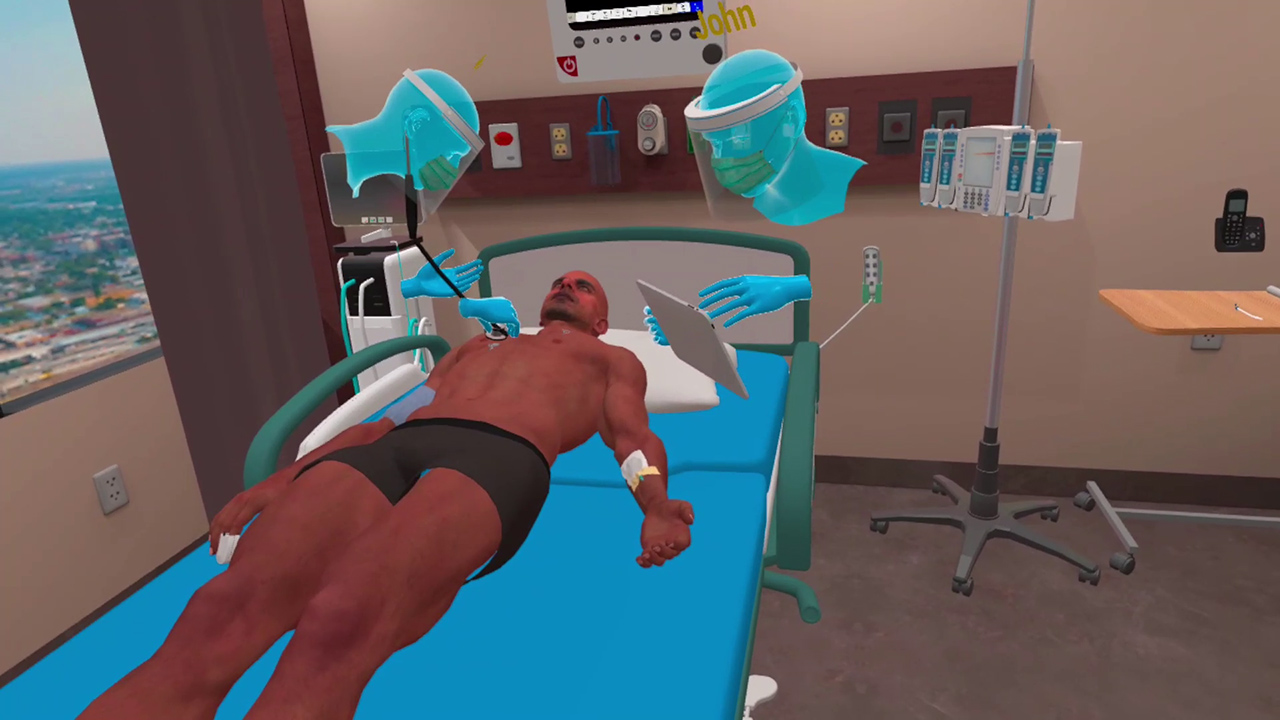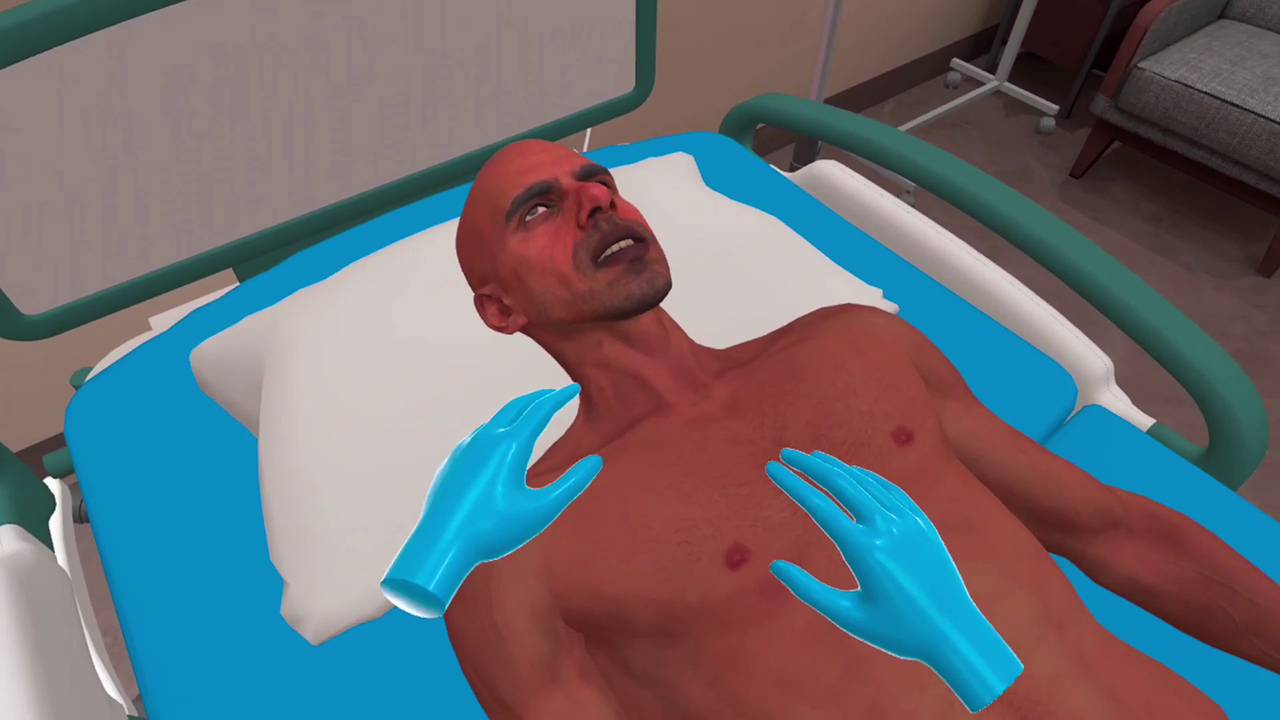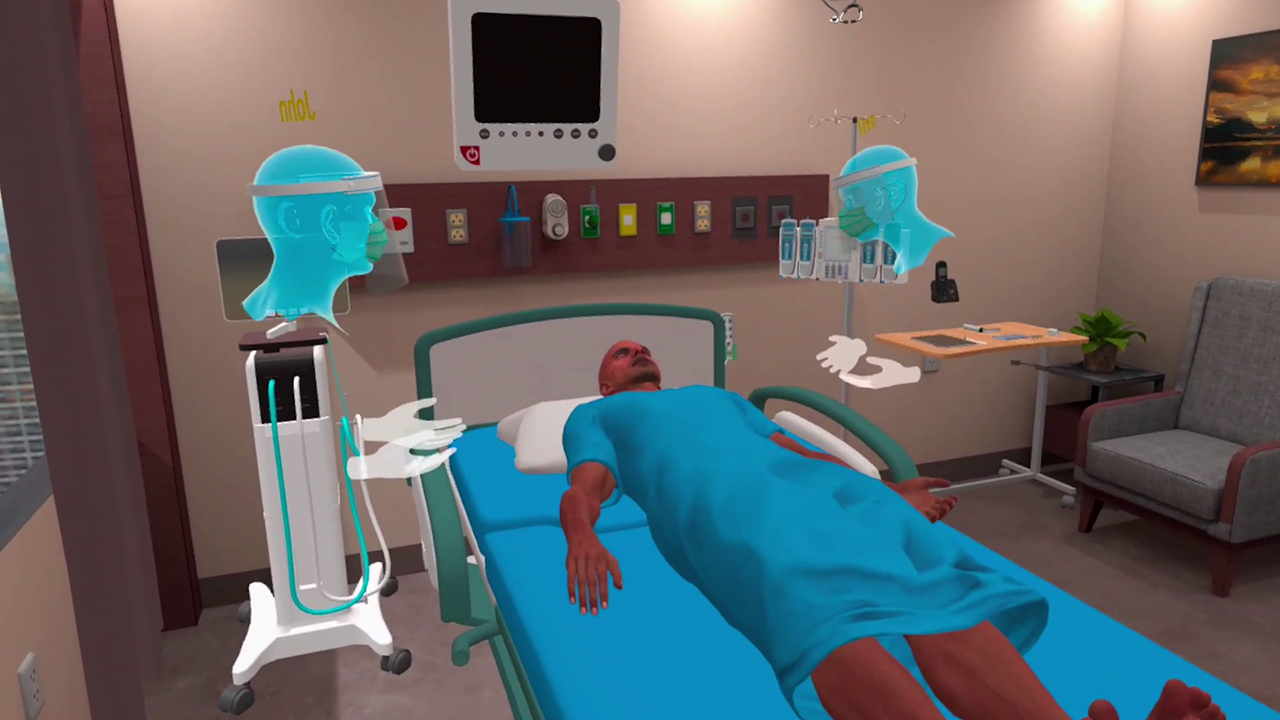Subarachnoid Hemorrhage
Fifty-year-old Joseph Taylor was at the gym lifting weights when he complained of a sudden headache and soon fell to the ground. He has suffered an aneurysmal subarachnoid hemorrhage (SAH) and is presented to the emergency department requiring intubation for airway protection. Joseph has developed acute hydrocephalus requiring ICP lowering maneuvers before definitive surgical management.
This multiplayer, open-scenario VR simulation is designed to help healthcare practitioners manage and explore treatment options for a patient suffering a neurologic catastrophe. The post-session debriefing serves as a self-analysis, helping learners identify errors and rectify them.
- Manage uncontrolled hypertension in a suspected case of non-traumatic SAH
- Consider the effect of intubation on intracranial pressure in the setting of a CNS catastrophe and options to mitigate this effect
- Anticipate and plan for intubation in the patient with possible increased intracranial pressure
- Apply therapeutic strategies to manage increased intracranial pressure in the setting of acute hydrocephalus

- Marx, J., Hockberger, R., & R. M., W. (2013). Headache Disorders. In Rosen’s Emergency Medicine: Concepts and clinical practice (8th ed., pp. 1390-1391). Philadelphia, Pa.: Elsevier Saunders.
- Diringer, M., Bleck, T., Menon, D. et al. (2011) Critical Care Management of Patients Following Aneurysmal Subarachnoid Hemorrhage: Recommendations from the Neurocritical Care Society’s Multidisciplinary Consensus Conference. Neurocrit Care. Sep; 15(2):211-40
- Connolly, E., Rabinstein, A., Derdeyen, C. et al. (2012) Guidelines for the management of aneurysmal subarachnoid hemorrhage: a guideline for healthcare professionals from the American Heart Association/American Stroke Association. Stroke. 2012 Jun;43(6):1711-37
Customize Your Program
Get rid of the editor. Adopt in-VR customization.
MedVR Education is bringing to you in-VR customization that will enable you to put together your own simulations by making selections from a wide range of feature choices.
- Select patient from a diverse background
- Choose preferred virtual environment
- Configure patient vitals
- Define simulation duration
- Create patient history and train with AI-Humans
- Customize session-end debriefing
- …..many more to come

 Multi-player
Multi-player
Sessions Physics-based Interaction
Physics-based Interaction
Core Skills Training

Subarachnoid Hemorrhage
In this multiplayer open scenario learners are presented with a patient with decreased mental state. During a session of weightlifting the patient had fallen to the ground after complaining of a headache. Learners are expected to prompt a GCS check, highlight for sternal rub and monitor the patient’s vitals. In order to secure the patient’s airway, the patient will have to be intubated. After consultation and approval by a neurosurgeon a CT of the head will have to be ordered. Affordances are made available to perform the necessary steps in the scenario. The team can discuss the case and share knowledge and experiences to treat the patient.
Debriefing
End-of-task debriefing to assess one’s performance, evaluate actions, and get the most out of the session. The debriefing includes crucial points related to the scenario.
- Thorough patient assessment
- Completion of necessary steps
- Correct medication administration to patient
- Sequential completion of task
- Execution of time-sensitive tasks







